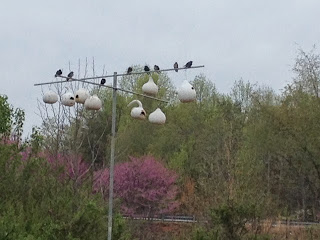The first warm Spring days always deliver the same concerning thought: What if there is no asparagus this year? Now that we are into the third week of harvest, that fear is replaced by another thought: How will we use all the asparagus? Fortunately, there are plenty of friends, family and chefs who willingly share our bounty.
Although supermarkets sell asparagus almost year round, these spears taste nothing like fresh, in season, local asparagus. Since asparagus continues to age after harvest, spears toughen and become bitter, so it is desirable to eat asparagus as soon as possible after cutting. For optimum flavor, eat asparagus asap after harvest
By early June, asparagus season will end for North Carolina, so enjoy this delicious spring harbinger while it is available. Fresh asparagus taste is vastly superior to supermarket produce
While trying out new preparations, I used asparagus to make slaw and salad. Since I could not decide which I preferred, I am including both recipes. Wild sorrel, with delicate yellow flowers and tangy flavor, makes a great edible garnish for both. Refrigerate fresh asparagus, upright in water
Asparagus SlawWild Sorrel
(Reserve tender asparagus spear tips for another use)
2 cups finely chopped asparagus spears
2 medium radishes, minced
1 small scallion, white and green tips minced
1/2 cup grated carrot
1 tablespoon fresh lemon juice
Splash of vinegar (Test purposes, ramp infused vinegar)
1-2 tablespoons extra virgin olive oil
Salt and freshly ground black pepper, to taste
Combine all ingredients, refrigerate for at least three hours before serving.
 | |
| Asparagus slaw and salad with wild sorrel garnish |
2 cups fresh asparagus spears, finely chopped
2 medium radishes, minced
1 small scallion, white and green tips, minced
2 hard boiled eggs, diced
1/2 cup grated carrot
1 tablespoon Dijon mustard
2 tablespoons Duke's mayo (add more if needed, to taste)
Salt and freshly ground black pepper, to taste
Combine all ingredients, refrigerate for at least three hours before serving.




















